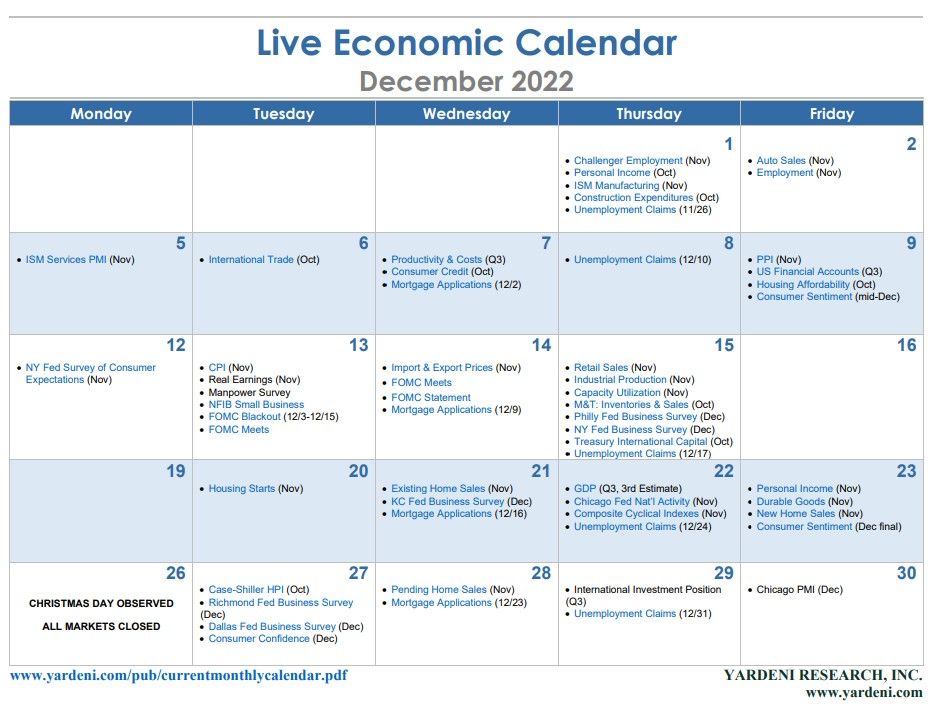Last Tuesday's good CPI news wasn't good enough according to Fed Chair Jerome Powell. In his Wednesday presser, he remained hawkish suggesting that the federal funds rate would be raised early next year to 5.00%-5.25% (bracketing the latest median forecast of the FOMC) and maintained at that restrictive level until inflation moderated significantly. Friday morning, Federal Reserve Bank of New York President John Williams said, “It could be higher than what we’ve written down” if that’s what it takes to reduce inflation to the Fed’s 2% goal. On Thursday, a slew of economic indicators raised hard-landing fears.
This week's economic indicators are unlikely to revive the Santa Claus rally in time for Christmas. The focus will be on November's Index of Leading Economic Indicators (Thu.) which is likely to be flat though at a record high as strength in payroll employment offset weakness in production. Then November's Personal Income (Fri.) should confirm that some of the weakness in retail sales last week reflected falling retail prices in some goods sectors and should confirm the ongoing pivot by consumers from goods to services. The PCED inflation rate should continue to moderate.
By the way, on Wednesday, December 13, a Philly Fed press release created a bit of a tweet storm claiming that the official payroll numbers were recently overstated. From March through June: "In the aggregate, 10,500 net new jobs were added during the period rather than the 1,121,500 jobs estimated by the sum of the states; the U.S. CES estimated net growth of 1,047,000 jobs for the period."
Does this mean that the Fed is tightening too much. Maybe, but so many labor indicators continue to suggest that demand for labor well exceeds supply.



